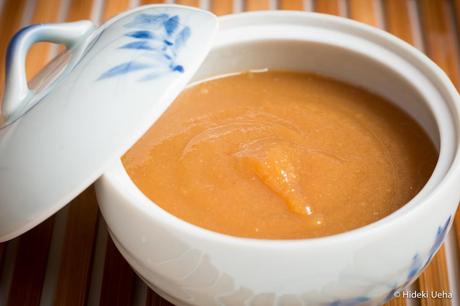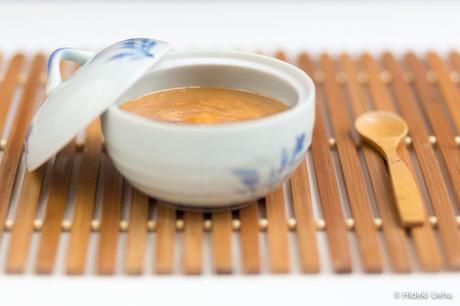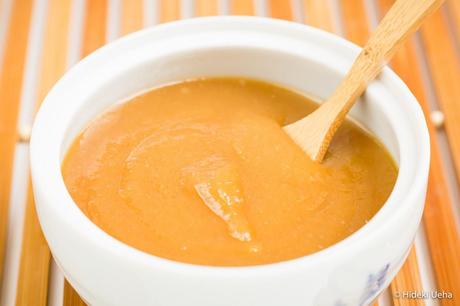
One of the most popular recipes on my blog is a miso marinade that I originally featured on my gindara misozuke | miso marinated black cod post. The miso marinade is based on a recipe by famed Nobu Matsuhisa and it’s so good that I decided it deserved a post all on it’s own simply because the marinade shouldn’t be limited to black cod, a favorite, or grilled salmon (read post here). (Photo Credit: Hideki Ueha)
Instead of continuing to post photos of the many ways that this marinade can be used, this is the go-to post for anything that you want to marinate with miso. It can be used on the fish of your choice, and also works for other seafood such as shrimp or scallops. Also try the marinade with skewered meat: on thinly sliced chicken tenderloins or thinly sliced flank steak. This marinade is a family favorite and never disappoints.

The miso marinade featured today is made using shiro miso or white miso. Shiro miso, by some, might also be referred to as Saikyo miso which represents a mild, sweet white miso that is produced in the Kansai (Kyoto, Osaka, Nara, Mie, Wakayama) region of Japan. Nobu Matsuhisa’s miso marinade recipe specifically calls for “Saikyo miso”, but trust me, the marinade will turn out great with any shiro miso that you use. Not surprisingly, Saikyo Miso (Company Ltd.) is also the name of a 200 year old manufacturer in Kyoto, Japan which specializes in the production of miso.
Miso Flavor Varieties
There are five primary flavors of miso you will often find at your local Japanese supermarket.
1. Shiro Miso or White Miso - This miso is lighter in color (golden yellow) and flavor. Soybeans are fermented using rice koji (koji is aspergillus oryzae fungus used for fermentation) and the lighter color is obtain due to the high content of rice koji (60%) to soybeans (40%). Because of the higher content of carbohydrates, shiro miso tends to be the sweetest of the three primary flavors of miso. It is popular in the Kansai region of Japan which includes Osaka, Kyoto and Kobe. Shiro miso is versatile for soups, dressings and marinades. This is what my Mom primarily cooked with when we were growing up and it’s what I tend to use at home too. (Follow links for recipes: miso soup and dote-nabe miso hot pot).
2. Aka Miso or Red Miso – This miso is dark reddish brown in color and it’s flavor is bold and salty. Aka miso is made from rice, barley, or soybeans and is considered to have the highest amount of protein. It is most popular in the Kanto region of Japan which includes Tokyo. As a child, I was never fond of aka miso, likely due to it’s bold flavor. Aka miso is used for soups, marinades and stir-fry. I remember my Auntie Sumiko often served aka miso whenever we ate at her home and she always claimed that it was healthier for us (now I know why). Today I am equally fond of aka miso as I am of shire miso, and I am always pleasantly surprised when served aka miso soup while dining at Japanese restaurants.
3. Awase Miso or Mixed Miso – This miso tends to be brown in color and is a mix of shiro (white) and aka (red) miso. If you’re looking for something in-between, not too sweet and not too salty and bold, this might be the miso for you. Awase miso is used for soups (including ramen or hot pots), dressings, marinades, and dips. It is very versatile. My Mom often cooked with either awase miso or shiro miso.
4. Hatcho Miso or Miso of Emperors – This miso is very dark brown in color, and has a smoky flavor, yet contains less salt and more protein than either shiro (white) or aka (red) miso. It also contains a significant amount of fiber. Hatcho miso is made primarily from soybeans and is fermented with Aspergillus spores and toasted barley flour. Unlike shir0 (white) and aka (red) miso, which have relatively fast fermentation periods, Hatcho miso is fermented for two years before it is ready for use. Miso of Emperors is not something I grew-up with, and not surprisingly, given we’re not an Imperial family (haha). Hatcho miso can be used in simmered dishes or in soup. For soup, it can be mixed with white or red miso to create a robust flavor.
5. Moromi Miso or Hishio Miso – This is a thick and chunky miso that is often used as a garnish or dip for raw vegetables. It can also be used as a marinade for seafood or meat. I’ve also tasted moromi miso in soup, which, if you like the chunks of barley (I happened to like this) you might enjoy this in soup as well. Moromi miso is made of fermented soybeans, cracked roasted wheat (mugi or barley), salt and water. The fermented mixture is the base from which soy sauce is made. It may also contain pickled chopped eggplant or cucumbers which aid the fermentation process.
(Sources: Soyfoods Association of North America, Soy Info Center, Wikipedia, and Kakuqu Hatcho Miso)

Miso Marinade Print
Recipe type: Marinade Author: Judy | Bebe Love Okazu A savory and sweet miso marinade Ingredients- 3/4 cup mirin (sweet sake)
- 2 cups shiro miso (white miso paste)
- 1 1/4 cups granulated sugar
- Splash of sake
- Bring the saké and the mirin to a boil in a saucepan on high. Boil for 20 seconds to evaporate the alcohol.
- Turn the heat down to low and add the miso paste. When the miso has dissolved completely, turn the heat up to high again and add the sugar. Stir constantly to ensure that the bottom of the pan doesn’t burn, and the sugar is completely dissolved.
- Remove from heat and cool to room temperature. Refrigerate.
- Suggested marinating times for seafood and meats: Fish – 2 to 3 days; Shrimp and Scallop – 4 hours; Chicken – 1 day, overnight; Beef – 1 day, overnight
Recipe adapted from Nobu Matsuhisa.
2.2.8

